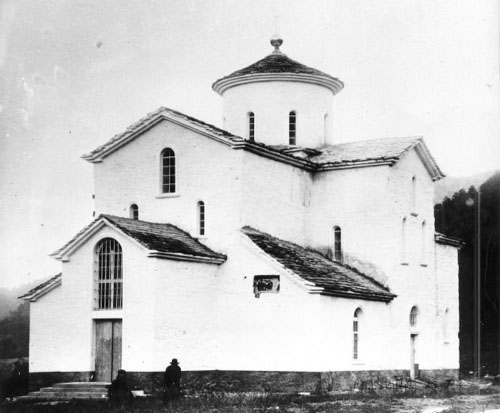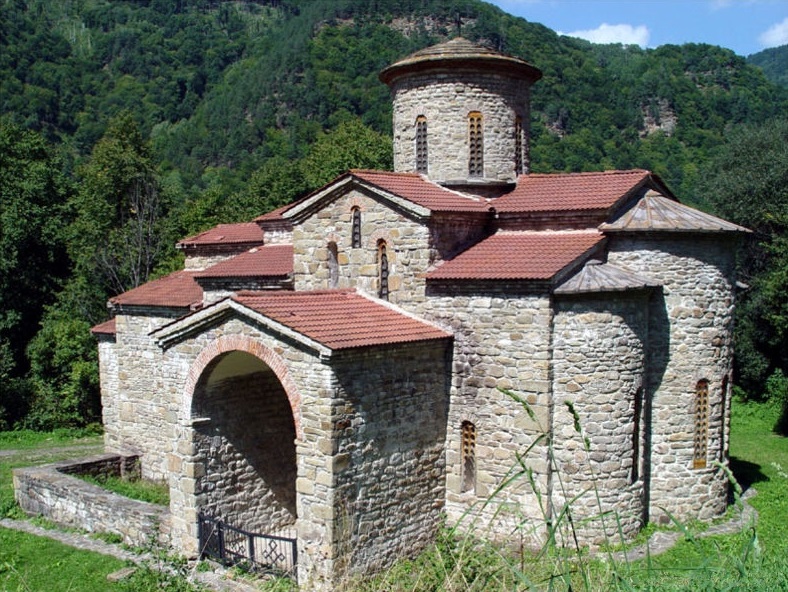|
Digoria
Digoria (Ossetic: Дигорæ (Digoræ); russian: Дигория (Digoria)) is a mostly mountainous region of the North Caucasus in the western part of the Republic of North Ossetia–Alania, Russia. The inhabitants speak the archaic Digor dialect of Ossetian. Today the name most often refers to Irafsky and Digorsky districts of the republic. Its most populous towns are Digora and Chikola which are situated in the agricultural region of the northern plains. The mountain areas to the south include Alania National Park and a number of historical villages where one can see the remains of many stone towers. The settlement of Galiat in particular has preserved a number of old stone towers and houses. See also *History of North Ossetia–Alania *Alania Alania was a medieval kingdom of the Iranian Alans (proto-Ossetians) that flourished in the Northern Caucasus, roughly in the location of latter-day Circassia, Chechnya, Ingushetia, and modern North Ossetia–Alania, from its indepen ... [...More Info...] [...Related Items...] OR: [Wikipedia] [Google] [Baidu] |
Digor Ossetian
Digor or Digorian (''дигорон digoron'') is a dialect of the Ossetian language spoken by the Digor people. It is less widely spoken than Iron, the other extant Ossetian dialect. The two are distinct enough to sometimes be considered separate languages; in the recently published Digor–Russian dictionary, the compiler Fedar Takazov refers to a "Digor language", though the editor in the same book uses "Digor dialect". Until 1939, Digor had a literary language separate from Iron. Digorian speakers live in the western part of North Ossetia (Digora, Chikola, etc.); in North Ossetia's capital, Vladikavkaz; and in larger cities of Russia. Counts of speakers are largely nonexistent, because Digorians are mostly calculated as Ossetians during census. See also * Ossetians * North Ossetia–Alania * Digor people The Digor ( Digor dialect: Дигорон - ''Digoron'', ''pl.'': Дигорӕ, Дигорӕнттӕ - ''Digoræ'', ''Digorænttæ'') are a subgroup of the Ossetians ... [...More Info...] [...Related Items...] OR: [Wikipedia] [Google] [Baidu] |
Irafsky District
Irafsky District (russian: Ира́фский райо́н; os, Æрæфы район, ''Æræfy rajon''; Digor Ossetian, Digorian: Ирæфи район, ''Iræfi rajon'') is an administrativeLaw #34-RZ and municipalLaw #14-RZ district (raion), one of the administrative divisions of the Republic of North Ossetia–Alania, eight in the Republic of North Ossetia–Alania, Russia. It is located in the west of the republic. The area of the district is . Its administrative center is the types of inhabited localities in Russia, rural locality (a ''village#Russia, selo'') of Chikola, Russia, Chikola. Population: 15,708 (Russian Census (2002), 2002 Census); The population of Chikola accounts for 44.5% of the district's total population. References Notes Sources * * {{coord, 43, 11, 29, N, 43, 55, 06, E, region:GE_type:adm3rd_source:kolossus-itwiki, display=title Districts of North Ossetia–Alania ... [...More Info...] [...Related Items...] OR: [Wikipedia] [Google] [Baidu] |
Digorsky District
Digorsky District (russian: Диго́рский райо́н; os, Дыгуры район, ''Dygury rajon''; Digorian: Дигори район, ''Digori rajon'') is an administrativeLaw #34-RZ and municipalLaw #13-RZ district (raion), one of the eight in the Republic of North Ossetia–Alania, Russia. It is located in the west of the republic. The area of the district is . Its administrative center is the town of Digora Digora (russian: Дигора́; os, Дигорæ, ''Digoræ'') is a town and the administrative center of Digorsky District of the Republic of North Ossetia–Alania, Russia, located on the Ursdon River (left tributary of the Terek), north .... Population: 20,625 ( 2002 Census); The population of Digora accounts for 56.1% of the district's total population. References Notes Sources * * {{coord, 43, 09, 29, N, 44, 09, 25, E, region:GE_type:adm3rd_source:kolossus-itwiki, display=title Districts of North Ossetia–Alania ... [...More Info...] [...Related Items...] OR: [Wikipedia] [Google] [Baidu] |
Alania National Park
Alaniya National Park (russian: Национальный парк «Ала́ния»), is a heavily glaciated, mountainous section of the northern slope of the Central Caucasus Mountains. It covers the southern third of the Irafsky District of the Republic of North Ossetia-Alania. The park was created to have a dual purpose of serving as an ecological refuge - it has very high levels of biodiversity and vulnerable species, such as the near-endangered west Caucasian tur – and also an area of high cultural heritage and potential for recreational tourism. The park contains widespread archaeological ruins from several notable past civilizations, including the Bronze Age Koban people (1200–300 BCE), and the Alans people (100 BCE – 1234 AD). It is from the Alans that the name "Alaniya", and indirectly the term "Aryan", is ultimately derived. Because altitudes in the park can span almost 4,000 meters vertical in very short distances, the slopes and valleys display strong 'altitude ... [...More Info...] [...Related Items...] OR: [Wikipedia] [Google] [Baidu] |
Ossetic Language
Ossetian (, , ), commonly referred to as Ossetic and rarely as Ossete (), is an Eastern Iranian language that is spoken predominantly in Ossetia, a region situated on both sides of the Greater Caucasus. It is the native language of the Ossetian people, and is one of the few Iranian languages spoken in Europe; it is a relative and possibly a descendant of the extinct Scythian, Sarmatian, and Alanic languages. The northern half of the Ossetia region is part of Russia and is known as North Ossetia–Alania, while the southern half is part of the ''de facto'' country of South Ossetia (recognized by the United Nations as Russian-occupied territory that is ''de jure'' part of Georgia). Ossetian-speakers number about 614,350, with 451,000 recorded in Russia per the 2010 Russian census. History and classification Ossetian is the spoken and literary language of the Ossetians, an Iranian ethnic group living in the central part of the Caucasus and constituting the basic population of ... [...More Info...] [...Related Items...] OR: [Wikipedia] [Google] [Baidu] |
North Caucasus
The North Caucasus, ( ady, Темыр Къафкъас, Temır Qafqas; kbd, Ишхъэрэ Къаукъаз, İṩxhərə Qauqaz; ce, Къилбаседа Кавказ, Q̇ilbaseda Kavkaz; , os, Цӕгат Кавказ, Cægat Kavkaz, inh, Даькъасте, Däq̇aste, krc, Шимал Кавказ, Şimal Kavkaz, russian: Северный Кавказ, r=Severnyy Kavkaz, p=ˈsʲevʲɪrnɨj kɐfˈkas) or Ciscaucasia (russian: Предкавказье, Predkavkazye), is a subregion of Eastern Europe in the Eurasian continent. It is the northern part of the wider Caucasus region, and is entirely a part of Russia, sandwiched between the Sea of Azov and Black Sea to the west, and the Caspian Sea to the east. The region shares land borders with Georgia (country), Georgia and Azerbaijan to the south. Krasnodar is the largest city within the North Caucasus. Politically, the North Caucasus is made up of Russian Republics of Russia, republics and krais. It lies north of the Main C ... [...More Info...] [...Related Items...] OR: [Wikipedia] [Google] [Baidu] |
North Ossetia–Alania
The Republic of North Ossetia–Alania; os, Республикӕ Цӕгат Ирыстон — Алани, ''Respublikæ Cægat Iryston — Alani'', ) is a republic of Russia situated in the North Caucasus of Eastern Europe. Its population according to the 2010 Census was 712,980. The republic's capital city is the city of Vladikavkaz, located on the foothills of the Caucasus Mountains. Forming 65.1% of the republic's population as of 2010, the Ossetians are an Iranian ethnic group native to the republic and neighboring South Ossetia. Ossetian is an east Iranian language descended from medieval Alanic and ancient Sarmatian. Unlike many groups in the North Caucasus, Ossetians are predominantly Christians. However, almost 30% of the population adheres to Ossetian ethnic religion, generally called Uatsdin (Уацдин, "True Faith"), and a sizable Muslim minority exists. Ethnic Russians and Ingush, who form a majority in neighboring Ingushetia, form substantial minoritie ... [...More Info...] [...Related Items...] OR: [Wikipedia] [Google] [Baidu] |
Russia
Russia (, , ), or the Russian Federation, is a List of transcontinental countries, transcontinental country spanning Eastern Europe and North Asia, Northern Asia. It is the List of countries and dependencies by area, largest country in the world, with its internationally recognised territory covering , and encompassing one-eighth of Earth's inhabitable landmass. Russia extends across Time in Russia, eleven time zones and shares Borders of Russia, land boundaries with fourteen countries, more than List of countries and territories by land borders, any other country but China. It is the List of countries and dependencies by population, world's ninth-most populous country and List of European countries by population, Europe's most populous country, with a population of 146 million people. The country's capital and List of cities and towns in Russia by population, largest city is Moscow, the List of European cities by population within city limits, largest city entirely within E ... [...More Info...] [...Related Items...] OR: [Wikipedia] [Google] [Baidu] |
Digora
Digora (russian: Дигора́; os, Дигорæ, ''Digoræ'') is a town and the administrative center of Digorsky District of the Republic of North Ossetia–Alania, Russia, located on the Ursdon River (left tributary of the Terek), northwest of the republic's capital Vladikavkaz. As of the 2010 Census, its population was 10,856. History Founded in 1852 as the ''aul'' of Volno-Khristianovsky () and later renamed the '' selo'' of Novokhristianovskoye () and Khristianovskoye (), it was finally given its present name in 1934. It was granted town status in 1964. Administrative and municipal status Within the framework of administrative divisions, Digora serves as the administrative center of Digorsky District Digorsky District (russian: Диго́рский райо́н; os, Дыгуры район, ''Dygury rajon''; Digorian: Дигори район, ''Digori rajon'') is an administrativeLaw #34-RZ and municipalLaw #13-RZ district (raion), one of the ....Law #34-RZ ... [...More Info...] [...Related Items...] OR: [Wikipedia] [Google] [Baidu] |
Chikola, Russia
Chikola (russian: Чикола, os, Цыкола, ''Tsykola'') is a rural locality (a selo) and the administrative center of Irafsky DistrictLaw #34-RZ of the Republic of North Ossetia–Alania, Russia Russia (, , ), or the Russian Federation, is a transcontinental country spanning Eastern Europe and Northern Asia. It is the largest country in the world, with its internationally recognised territory covering , and encompassing one-eig .... Population: References Notes Sources * * {{Authority control Rural localities in North Ossetia–Alania ... [...More Info...] [...Related Items...] OR: [Wikipedia] [Google] [Baidu] |
History Of North Ossetia–Alania
The Republic of North Ossetia – Alania is a federal subject of Russia (a republic), located in the Caucasus region. Early history The territory of North Ossetia has been inhabited for thousands of years, being both a very fertile agricultural region and a key trade route through the Caucasus Mountains. The ancestors of the present inhabitants were a people called the Alans,Аланы a warlike nomadic people who spoke an . Part of the Alan people eventually s ... [...More Info...] [...Related Items...] OR: [Wikipedia] [Google] [Baidu] |
Alania
Alania was a medieval kingdom of the Iranian Alans (proto-Ossetians) that flourished in the Northern Caucasus, roughly in the location of latter-day Circassia, Chechnya, Ingushetia, and modern North Ossetia–Alania, from its independence from the Khazars in the late 9th century until its destruction by the Mongol invasion in 1238–39. Its capital was Maghas, and it controlled a vital trade route through the Darial Pass. The kingdom reached its peak in the 11th century, under the rule of king Durgulel. Name The name ''Alania'' derives from the Old Iranian stem *''Aryāna-'', a derivative form of the Indo-Iranian stem *''arya''- ('Aryan'). It is cognate with the name of Iran (''Ērān''), which stems from the Old Persian ''*Aryānām'' ('of the Aryans')''.'' History The Alans (Alani) originated as an Iranian-speaking subdivision of the Sarmatians. They were split by the invasion of the Huns into two parts, the European and the Caucasian. The Caucasian Alans occupied part ... [...More Info...] [...Related Items...] OR: [Wikipedia] [Google] [Baidu] |



